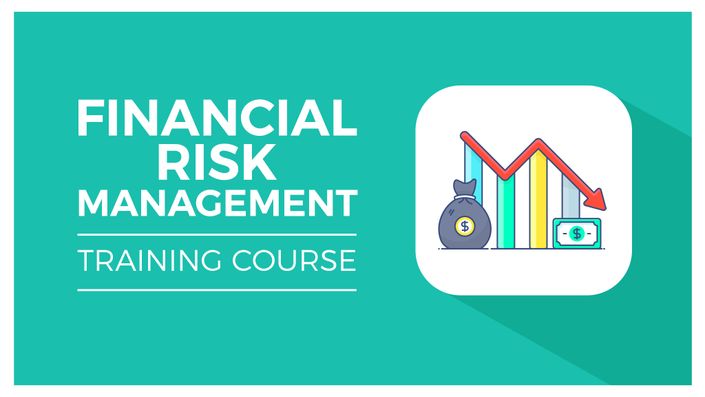
Financial Risk Management
Learn the fundamentals of financial risk management

This course covers the fundamentals of financial risk management, with a focus on practical implementation and application. It will focus on variety of risks that financial managers face and the tools available for managing them. Particularly, we shall focus on credit risk, interest rate, foreign exchange risk, and operational risk.
Extreme market events are a key risk management concern, especially in the aftermath of the global financial crisis and the many unresolved issues it presented. We will be investigating some of the biggest financial shocks through case studies and solve these cases by applying the concepts acquired in this course.
The course seeks to explain what risk and risk management means in a corporate setting, common methods for managing and measuring risk and developing a risk management strategy.
Students attending this course are expected to have a basic knowledge of finance and accounting. This course is aimed at those who want to understand the essentials of risk management. Please note that this course does not serve as a preparation for the FRM exams.
After finishing this course, students will be able to:
- Distinguish between risk, uncertainty, and randomness
- Distinguish between risk management and risk measurement
- Understand the importance of risk governance
- Describe risk budgeting and understand its role in risk governance
- Realize the importance of managing people, processes, technology, and organizational structure for effective risk management
- Recognize the difference between idiosyncratic and systematic risks
- Define, classify, and distinguish between financial risks
- Identify and understand the principles of credit, foreign exchange, interest rate, and operational risk
- Recognize probability, standard deviation, Value-at-Risk (VaR), and scenario analysis/stress testing as risk measurement metrics
- Distinguish between risk prevention and avoidance
- Define and apply the concepts of self-insurance, risk shifting, and risk transfer
- Realize insurance as a way to transfer risks
- Recognize outsourcing and derivatives as two ways of shifting risk.
Course Format
- This is a video-led course. You can preview some videos below.
- This course includes practice exercises.
- This course is aimed at PC Excel users.
Course Certificate Included
This course includes an optional online quiz that will generate a course certificate upon completion.
14-Day Guarantee
We offer an unconditional, 14-day, full money-back guarantee, no questions asked. This is our way of ensuring you have complete confidence in your Stream Skill purchase. If you don’t learn, you don’t pay.
Why Trust Us?
Stream Skill is part of the Simon Sez IT family and has been in business 14+ years and taught over 1 million students in that time. We’ve created over 130 software training courses, 8,000+ video tutorials, and we’ve helped thousands of people across the world learn how to use Microsoft Office. We’ve now created Microsoft Excel courses for the last five versions and continue to help people get to grips with this essential tool.
Your Instructor

Course Curriculum
-
StartDefining Risk Management and Risk Measurement (8:23)
-
StartDeveloping a Framework for Managing Risk (9:04)
-
StartCase Study: Risk Management Framework (8:10)
-
StartRisk Governance (8:28)
-
StartUnderstanding Risk Tolerance (8:37)
-
StartUnderstanding Risk Budgeting (7:19)
-
StartCase Study: Risk Budgeting and Tolerance (6:53)
-
StartA Balancing Act (9:07)
-
StartManaging People (8:21)
-
StartManaging Risk by Assessing Processes (8:16)
-
StartCase Study: Managing People and Processes (8:06)
-
StartManaging Technology Part 1 (9:57)
-
StartManaging Technology Part 2 (8:55)
-
StartCase Study: Managing Technology (8:48)
-
StartUnderstanding the Organizational Structure (9:34)
-
StartManaging the Unexpected Part 1 (9:16)
-
StartManaging the Unexpected Part 2 (9:03)
-
StartCase Study: Organizational Structure and Managing the Unexpected (7:49)
